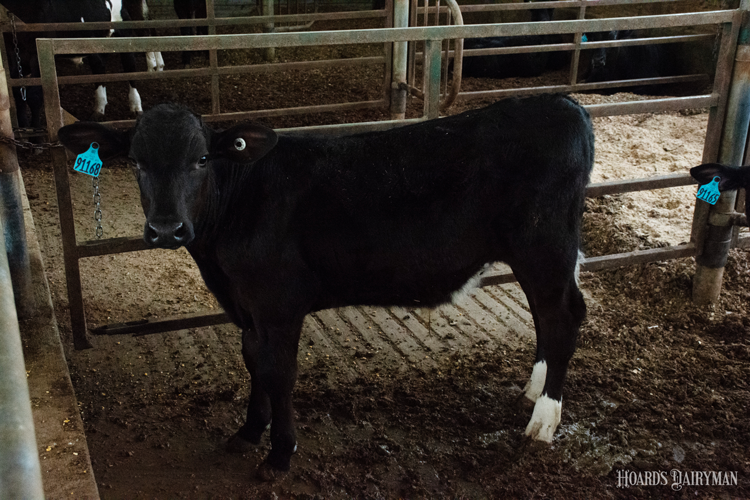
The use of beef semen on dairy cattle has been a real asset to dairy farms, both in reducing the cost of raising excess dairy heifers and creating more valuable calves to be sold. These dairy-beef crosses have found their place in the meat industry and offer benefits over straight dairy steers for both the farmer and the packer.
An area of needed improvement, though, is reducing the number of liver abscesses present in these cattle at slaughter. In fact, Blake Foraker, an assistant professor at Washington State University, called this the “number one opportunity” in the beef-on-dairy space.
During the Professional Dairy Producers (PDP) Annual Business Conference held in Wisconsin Dells, Wis., Foraker explained that liver abscesses can form when cattle are fed a high concentrate diet and become acidotic. If the rumen pH gets really low, it weakens the lining of the gut wall and bacteria leak into the animal’s system. That bacteria is filtered into the liver, and an abscess forms.
He said there are many questions as to exactly when these abscesses form and if there is a genetic component. However, he said we do know that there are nutritional strategies that result in a higher or lower prevalence of abscesses.
If a liver has an abscess, it is condemned, but the liver itself only has a value of about $5 right now, Foraker noted. So, that’s not a huge loss. Why, then, do liver abscesses matter?
From a producers’ perspective, there are some cases where a liver abscess can affect a live animal’s performance, Foraker shared. Once an animal is slaughtered, “Where it really matters to a packer, and why liver abscesses are a leading cause of a dairy discount on a beef-on-dairy model, is the loss of outside skirt,” Foraker explained. In some cases, the abscesses will become so severe that the diaphragm muscle, also known as the outside skirt muscle, adheres to the liver. This outside skirt is a high-valued piece of meat that offers a “phenomenal eating experience,” Foraker said, and it is used in foods such as fajitas.
“Outside skirt muscle was second in value in 2023 on a per pound basis only to tenderloin,” Foraker said.
That muscle, even though it only represents 5 pounds of a carcass, it is worth $12 per pound, he calculated. If it is adhered to the liver because of an abscess, that is worth $60 per animal, which is rather significant, Foraker said.
On a carcass weight basis, that might only be a loss of $14 to the producer, but for a packer, they lost $45 because there is no longer an outside skirt muscle they can merchandize. “This is one of the reasons this [liver abscesses] is so important. It’s not the loss of the liver, but the loss of the skirt,” Foraker described.
There is also the time lost dealing with the damage caused by abscesses, and Foraker said time is of high importance to packers. Current research is underway to help unearth more answers about the causes of liver abscesses and prevention strategies.








